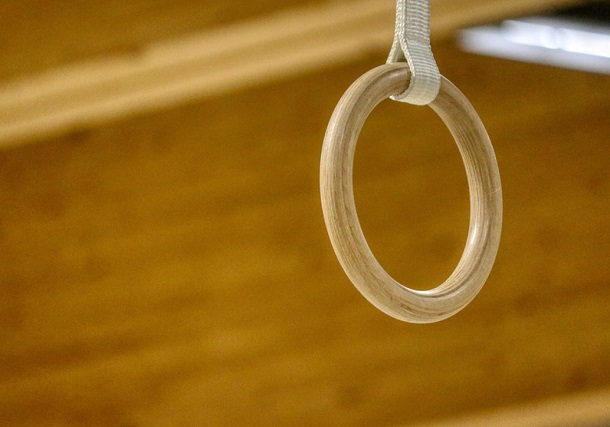Gymnastic Ring - Analysis and Buying Guide - 2023
The most frustrating aspect of exercise is when you fall into a rut and plateau. You need to shake things up and change your training to free yourself from those limitations if you want to keep getting better. Adding gymnastic rings to your exercise regimen is one of the best ways to go.
Because you have to keep them steady while you exercise, gymnastic rings require not only strength but also concentration, balance, and flexibility. Adding just a few basic exercises (such as push-ups and pull-ups) that incorporate gymnastic rings will have a dynamic impact on your progress.
Although there are many types of gymnastic rings available, there are only three basic parts, so it's not hard to quickly determine which set of rings is best for you. If you want to learn how to do it, read on for a quick tutorial and our favorite recommendations.
Key Considerations
As noted, gymnastic rings only have three features to consider: the straps (cinches), the buckles, and the rings. This makes it easy to focus on what's important to ensure you're getting the best set.
Straps
The straps suspend the gymnastic rings in the air. These should be thick, sturdy straps that support much more than your weight. In addition, the straps must be manufactured to be firm, which means that they do not have any type of stretch or elasticity. The best leashes are much longer than you think is necessary, allowing them to be used in a variety of situations. Look for a length that is at least twice your height.
Buckles
Since the straps are adjustable, all gymnastics rings need a sturdy set of anti-slip buckles.
- Cam :
Most have a cam buckle, which is the same type of buckle used to fasten and secure loads for transport. These devices are durable, do not slip, and will support your weight. The downside of cam buckles is that they are tight. Unless the straps are marked, it can take a long time to get the gymnastic rings up and down (you want them to be even).
- Carabiner :
An alternative to the cam system is the carabiner system. This is similar to the system found on climbing harnesses. The distances are all preset so it makes setup and adjustments quick and easy. In most cases, this is the preferred option, but these gymnastic ring sets are more expensive.
Rings
There are three materials used to make the rings: plastic, metal and wood.
- Plastic :
This is the most affordable option, but it has two drawbacks: the rings can feel too light and they can be slippery in sweaty hands. The lightweight feel is just a side effect of the materials used and does not make the gymnastics rings any less durable. It just feels that way. However, slippage can be a safety issue, so make sure your plastic rings have a texture that allows for a comfortable, non-slip grip.
- Metal :
These rings can be hard to find, and even the textured ones can be difficult to find on your hands. You might want to consider wrapping the metal rings with tape or buying a pair of gym grips to protect your palms. The benefits of metal rings are that they are made from stainless steel, feel very solid, and if worn correctly should be pretty indestructible.
- Wood :
It is the preferred material for a set of gymnastic rings and is the required material for Olympic competitions. It's durable, and the natural texture of the wood ensures a good grip, plus it can be easily adjusted to your preference using sandpaper. The disadvantage of wooden gymnastics rings is that they are more expensive than plastic ones and they do not hold up in outdoor environments.
Tips
See if you can wear your rings in the gym or in the park. If you're a gym member, check to see if the facility allows you to bring your gymnastic rings to hang on a pull-up bar. If there's a local park nearby that has a pull-up bar, that can also be a viable option. A tree with a solid branch at the right height can be a surprisingly good choice for those willing to exercise in all kinds of weather.
Find the right place to hang your rings at home. If you have a room with a high ceiling that is suitable for hanging your gymnastic rings, that is the best option. It is permanent and offers a controlled environment for training throughout the year. If you have a hatch in your house, installing a weight training bar across the opening can provide a place to hang your gymnastic rings.
A garage with a high ceiling or beams is another option. A towel can be placed over the beams to reduce wear on the straps. If you have no other options and are handy with tools, you can build your own ring frame in your yard. However, you should know that most gymnastic rings are not designed to be outdoor equipment. If you leave them exposed to the elements, they will quickly deteriorate.
Get the right hardware. Whichever way you decide to strap your gymnastic rings, make sure the equipment is rated for at least twice your body weight.
FAQ
Que. Do I have to know Gymnastics to use Gymnastics Rings?
Ans. No. Don't let the name of the team scare you away from incorporating it into your exercise regimen. When used for strength training, gymnastic rings do not require the level of balance, agility, or flexibility associated with competition. Rings are just another tool, like a pull-up bar, dumbbells, or jump rope, used for exercise. Gymnastic rings offer a more effective way to do push-ups, pull-ups, jumping jacks, muscle-ups and more. However, if you'd like to level up to more advanced movements, you don't need to limit yourself to those traditional exercises.
Read More :

